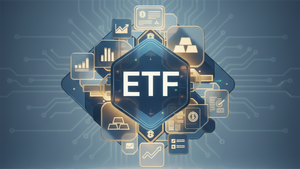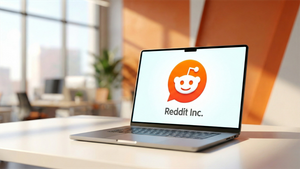
The battle against inflation continues to define the economic narrative, as the Federal Reserve grapples with persistent price pressures that remain stubbornly above its long-term 2% target. A critical divide exists in how this inflation is measured – through the widely cited Consumer Price Index (CPI) and the Federal Reserve's preferred Personal Consumption Expenditures (PCE) price index. The nuanced differences between these two metrics are now more crucial than ever, as economic forecasts suggest that inflation, fueled by various domestic and global factors, may continue to challenge policymakers and reshape market dynamics well into 2026. This ongoing inflationary environment has immediate and profound implications for businesses, consumers, and investors alike, forcing strategic re-evaluations across the financial landscape.
The Tale of Two Indexes: Why CPI and PCE Diverge, and Why It Matters
The United States relies on two primary measures to track inflation: the Consumer Price Index (CPI), published by the Bureau of Labor Statistics, and the Personal Consumption Expenditures (PCE) price index, produced by the Bureau of Economic Analysis. While both aim to quantify changes in consumer prices, their distinct methodologies often lead to different readings, with significant consequences for monetary policy, particularly the Federal Reserve's persistent pursuit of its 2% inflation target.
The methodological differences between CPI and PCE are multifaceted. Firstly, their formulas and weighting diverge. The CPI uses a Laspeyres formula with a fixed basket of goods and services, updated annually. This means it's less agile in reflecting changes in consumer behavior, such as substituting a cheaper product when prices for a preferred one rise. Consequently, the CPI can sometimes overstate actual inflation. In contrast, the PCE employs a Fisher-Ideal formula with weights updated monthly or quarterly. This dynamic weighting allows the PCE to account for consumer substitution, providing a more accurate representation of how price changes affect what consumers actually buy.
Secondly, their scope of coverage differs significantly. The CPI primarily tracks out-of-pocket expenditures by urban households. The PCE, however, offers a broader perspective, encompassing spending by both urban and rural consumers, and crucially, expenditures made on behalf of consumers. This includes significant categories like employer-provided health insurance and government programs such as Medicare and Medicaid, which are excluded from the CPI. This broader inclusion gives PCE a notably higher weight on medical care costs compared to the CPI, while housing/shelter has a lower weight. Lastly, data sources also play a role; CPI data is largely from household surveys, while PCE data stems from business surveys.
The Federal Reserve's unwavering preference for the core PCE (excluding volatile food and energy prices) as its primary inflation gauge, explicitly adopted in 2000 and used for its 2% long-run inflation target since 2012, is rooted in these advantages. The PCE's comprehensive scope, more frequent weight updates reflecting consumer behavior, and its revisability for improved measurement techniques make it a more adaptable and representative metric for policy-making. This distinction is critical because if the Fed achieves its 2% PCE target, the CPI measure would likely average around 2.4%, a divergence that can influence public perception and market reactions.
Recent data underscores the ongoing inflationary environment. As of August 2025, headline CPI inflation rose to 2.9% year-over-year (YoY), an acceleration from July's 2.7%. Core CPI, which excludes food and energy, held steady at 3.1% YoY. For July 2025, the PCE Price Index registered 2.6% YoY, while the core PCE, the Fed's preferred measure, increased to 2.90%. Historically, CPI has tended to run approximately 0.4 percentage points higher than PCE, although this "wedge" can fluctuate. The persistence of both metrics above the Fed's 2% target highlights the ongoing challenge in achieving price stability, directly influencing the central bank's monetary policy decisions, interest rate adjustments, and its communication strategy to guide economic expectations.
Shifting Sands: Who Thrives and Who Struggles in a High-Inflation Landscape
A sustained period of inflation above the Federal Reserve's 2% target into 2026 is poised to redraw the lines of economic success, creating clear winners and losers across various industries and public companies. Sectors with strong pricing power and essential goods will likely fare better, while those reliant on discretionary spending or future growth projections will face significant headwinds.
The Energy Sector stands out as a traditional winner. Companies like Exxon Mobil (NYSE: XOM) and Devon Energy (NYSE: DVN) benefit directly from rising commodity prices. Their revenues are closely tied to the cost of oil and natural gas, which are major components of inflation. With relatively inelastic demand for energy, these companies can often pass increased costs onto consumers, bolstering profitability. Historically, energy stocks have outperformed other sectors during inflationary periods, demonstrating robust real returns.
Consumer Staples also tend to be resilient. Firms such as The Coca-Cola Company (NYSE: KO), Hershey (NYSE: HSY), and Procter & Gamble (NYSE: PG) produce everyday necessities like food, beverages, and household goods. Their strong brand loyalty and essential nature allow them to maintain demand even as they implement price increases to offset rising input costs (raw materials, labor, transportation). While not immune to consumer sensitivity, their ability to pass on costs helps preserve margins. However, the experience of Kraft Heinz (NASDAQ: KHC), which saw consumers trade down to cheaper alternatives when prices surged too high, underscores that even strong pricing power has limits.
The Financials Sector faces a mixed bag. Initially, rising interest rates, a common anti-inflationary measure by central banks, can boost banks' Net Interest Margins (NIMs) – the difference between interest earned on loans and interest paid on deposits. Banks with a higher proportion of variable-rate loans might see increased earnings. However, prolonged high rates can eventually compress NIMs if deposit costs rise more steeply. Moreover, inflation increases banks' operational expenses. Crucially, institutions holding significant fixed-rate assets, such as long-term bonds or fixed-rate mortgages, can experience substantial mark-to-market losses as rates climb, potentially eroding their tangible equity. Higher borrowing costs can also reduce loan demand and increase credit risk, particularly for regional banks.
Conversely, the Technology Sector generally finds itself on the losing side. Tech companies are highly sensitive to rising interest rates, which increase the cost of capital for expansion and R&D. This also diminishes the present value of their often significant future earnings, negatively impacting valuations. Inflation also drives up operational costs, including cloud infrastructure and skilled labor. As consumers and businesses tighten their belts, discretionary tech spending may slow, impacting sales for companies like Apple (NASDAQ: AAPL), Amazon (NASDAQ: AMZN) (especially its retail arm), and Meta (NASDAQ: META).
The Consumer Discretionary Sector is particularly vulnerable. Companies selling non-essential goods and services, from luxury items and vehicles to entertainment and dining, face highly elastic demand. When inflation erodes purchasing power, consumers cut back on these "nice-to-haves." This leads to reduced sales volumes, lower revenues, and difficulties in passing on increased costs, severely squeezing profit margins. Examples include McDonald's (NYSE: MCD) and Starbucks (NASDAQ: SBUX) reporting slowing comparable sales, and automobile manufacturers like Volkswagen (OTC: VWAGY), Tesla (NASDAQ: TSLA), Toyota (NYSE: TM), and General Motors (NYSE: GM) experiencing reduced demand for vehicles. Retailers such as Nike (NYSE: NKE), Home Depot (NYSE: HD), and Lowe's (NYSE: LOW) also face headwinds as consumers curb spending on home improvements and apparel.
Beyond the Balance Sheet: Broad Implications and Echoes of the Past
The sustained elevation of inflation beyond the Federal Reserve's 2% target carries ramifications far beyond individual corporate balance sheets, rippling through labor markets, fundamentally altering consumer spending habits, shaping government policy, and posing significant challenges to global economic stability. This intricate interplay often draws parallels to historical periods of economic turmoil, providing crucial lessons for the present.
In the labor markets, sustained inflation erodes the real value of wages, compelling workers to seek higher-paying opportunities. This increased job-to-job transition, while seemingly indicative of a "hot" labor market, can reduce allocative efficiency and create an illusion of robust wage growth that merely keeps pace with rising costs. If left unchecked, this can lead to a dangerous wage-price spiral, where rising prices prompt demands for higher wages, which in turn feed into further price increases. While some research suggests that inflation can make labor effectively cheaper for companies by outpacing wage increases, potentially reducing layoffs, the overall impact of uncontrolled inflation generally leads to slower hiring, increased layoffs, and higher unemployment over time. The healthcare sector, for example, faces rising consumer prices exacerbated by labor shortages, pushing up costs.
Consumer spending patterns undergo a dramatic shift. With purchasing power diminished, consumers, particularly in low- and middle-income brackets, are forced to prioritize essential goods like food, fuel, and housing. Discretionary spending on items such as luxury goods, entertainment, and even dining out, is significantly curtailed. This often leads to "trade-down" behavior, where consumers opt for lower-priced alternatives, seek promotions, or switch to private-label brands. The psychological impact of inflation often exceeds its actual economic effect, as consumers keenly notice price increases, especially for frequently purchased items. This reduced overall spending ultimately impacts a wide array of industries, from retail to hospitality.
Government policy is profoundly influenced by persistent inflation. Central banks, like the Federal Reserve, primarily respond by raising interest rates to curb demand and slow price growth. This involves shifting from accommodative to restrictive monetary policies. However, fiscal policy also plays a critical role. While excessive government spending can fuel inflation, measures like cutting government expenditures, easing regulatory burdens to enhance supply, and reducing tariffs can help combat price pressures. Unexpected inflation can temporarily improve government fiscal balances by increasing nominal tax revenues, but political challenges often delay the implementation of necessary fiscal restraint, as such measures can be unpopular with voters.
The broader implications extend to global economic stability. Inflation, exacerbated by global supply chain disruptions and geopolitical events like the conflict in Ukraine affecting food and energy prices, can trigger a widespread cost-of-living crisis. This economic unfairness can fuel social discontent, potentially contributing to political instability and global disruption. Inflation also diminishes a currency's purchasing power, affecting exchange rates and international trade. Moreover, high and persistent inflation can impair an economy's long-term growth potential and reduce business investment, leading to significant and permanent reductions in per capita income.
Historically, there are striking parallels to periods of elevated inflation. The post-World War II era (1946-1948) saw inflation surge due to the lifting of price controls, supply shortages, and pent-up demand, offering a strong comparison to recent inflationary episodes driven by pandemic-related disruptions. The "Great Inflation" of the mid-1960s to early 1980s, characterized by booming economic growth, oil price shocks, and unanchored inflation expectations, provides a stark reminder of the challenges in controlling persistent price rises and the importance of independent central bank action. Even ancient civilizations, such as the Roman Empire with its currency debasement, experienced the destabilizing effects of inflation. These historical precedents underscore the diverse origins and consistently detrimental impacts of prolonged inflation on economies and societies, highlighting the need for a balanced and proactive policy response.
Navigating the Rapids: What Comes Next for Inflation and the Economy
The path forward into 2026 for inflation and the broader economy remains complex, marked by a delicate balancing act for the Federal Reserve and a need for strategic adaptation from businesses and investors. Forecasts largely point to a moderation of inflationary pressures, but with persistent concerns, particularly stemming from trade policies.
Inflation Forecasts into 2026: While the Federal Reserve's June 2025 Summary of Economic Projections (SEP) anticipates core PCE inflation to decline from 3.1% in 2025 to 2.4% in 2026, reaching the 2% target by 2027, this trajectory is significantly influenced by U.S. tariffs on imported goods. The Congressional Budget Office (CBO, September 2025) similarly projects PCE inflation to peak at 3.1% in 2025 due to tariffs before easing to 2.4% in 2026. However, some models, such as those from Trading Economics, project core PCE and overall PCE to trend around 2.00% in 2026. Conversely, J.P. Morgan Global Research (July 2025) expects core PCE to climb to 4.6% (quarterly annualized) in Q3 2025 due to tariffs, ending 2025 at 3.4%, with tariff impacts sustained through Q2 2026. The Conference Board (February 2025) is more optimistic, forecasting inflation to reach the 2% target by mid-2026, contingent on the absence of new price pressures. The overarching sentiment suggests inflation will moderate but may struggle to consistently meet the Fed's target, largely due to ongoing tariff-related price increases.
Federal Reserve Actions: The Federal Reserve is widely expected to initiate a new round of interest rate cuts. J.P. Morgan Global Research forecasts a 25 basis point (bp) cut in September 2025, followed by three more 25 bp cuts by the end of Q1 2026, bringing the federal funds rate to 3.25–3.5%. Nuveen also anticipates two 25 bps cuts in 2025 and two in 2026. However, the extent of these cuts could be limited if upside inflation risks persist. The Fed's approach will remain data-dependent, with Chair Powell emphasizing the balance between inflation control and labor market protection. The Fed is also continuing its quantitative tightening, albeit at a slower pace for Treasury securities from June 2025, to further normalize its balance sheet. Potential political influence from a new U.S. administration by mid-2026 could also impact the Fed's stance.
Market Reactions: Markets are already pricing in a 0.25% Fed rate cut in September 2025. While lower rates could stimulate economic activity, historical data suggests the S&P 500 has experienced average corrections of 8-9% when the Fed begins a rate-cutting cycle, pointing to potential volatility. Persistent tariff-driven inflation could keep long-term bond yields and mortgage rates elevated, limiting the full impact of Fed rate cuts. U.S. large-cap growth stocks, particularly in AI and energy, are expected to benefit from cheaper capital. However, tariff impacts on corporate earnings could lead to equity market drawdowns. Global monetary policy divergence, with Europe and Asia potentially more dovish, could support risk assets in those regions. The housing market will likely continue to face affordability pressures until mortgage rates and home price growth moderates.
Strategic Adaptations:
- Businesses must prioritize strong cash flow management, adopt value-based pricing strategies to justify increases without alienating customers, and focus on cost control and operational efficiency. Strengthening supplier relationships and deeply understanding evolving customer behavior through feedback will be crucial. Human resources departments need to manage compensation conservatively but strategically, prioritizing employee experience.
- Investors should consider a diversified portfolio with inflation-resilient assets like Treasury Inflation-Protected Securities (TIPS) and commodities. Increased allocation to floating-rate private credit, infrastructure, and businesses with recurring revenue and high gross margins can also offer stability. Domestic agriculture, U.S.-based hardware manufacturing, and renewable energy sectors could benefit from tariff policies. In fixed income, intermediate-duration bonds and high-quality corporate debt offer a balance of yield and resilience.
Potential Scenarios for Inflation and Economic Growth:
- Soft Landing: Many economists forecast moderate growth in 2026, with inflation gradually easing towards the 2% target, avoiding a recession.
- Persistent Elevated Inflation/Slower Growth: Tariffs and strong consumer demand could keep inflation above target, leading to sluggish U.S. economic growth.
- Stagflationary Risks: A "wage-price spiral" due to tariffs could push inflation higher, leading to a challenging environment of high inflation and low growth.
- Upside Inflation Risks: Escalating geopolitical conflicts (e.g., in the Middle East causing energy price shocks) or significant government spending could drive inflation higher.
- Downside Growth Risks: Geopolitical tensions and elevated uncertainty remain downside risks to global growth.
The Fed's data-dependent approach will be vital in navigating these scenarios, with continued close monitoring of employment figures, inflation metrics, and the unpredictable nature of trade policy.
The Long Road to Stability: A Concluding Outlook
The financial markets find themselves at a critical juncture, defined by the ongoing dance between inflationary pressures and the Federal Reserve's commitment to price stability. The nuanced distinction between CPI and PCE inflation is not merely an academic exercise; it underpins the central bank's policy decisions and fundamentally shapes economic expectations. While CPI, often more volatile and reflecting a fixed basket of goods, captures public attention, it is the broader, more adaptive PCE that guides the Fed's hand, explicitly serving as its benchmark for the elusive 2% inflation target.
Looking ahead to 2026, the consensus among economists suggests a gradual moderation of inflation, yet a significant risk remains that it will persist above the Fed's 2% target, primarily influenced by the lingering effects of U.S. tariffs. This "low-grade fever" of inflation, potentially driven by a weakening dollar and persistent labor supply constraints, indicates that the battle for price stability is far from over. The Federal Reserve, poised to initiate a new round of interest rate cuts, will tread carefully, balancing its dual mandate of controlling inflation while safeguarding the labor market. Its data-dependent approach means every jobs report, inflation reading, and geopolitical development will be scrutinized for signals regarding future monetary policy adjustments.
The market moving forward will likely be characterized by continued volatility and a discerning eye on economic indicators. Investors should acknowledge that while rate cuts could provide a tailwind for risk assets, the historical tendency for market corrections during initial rate-cutting cycles necessitates caution. Growth-oriented sectors, particularly those leveraging AI and energy, may continue to attract capital, but the broader impact of tariffs on corporate earnings could temper enthusiasm.
Crucial indicators for investors to monitor in the coming months include not only the headline and core CPI and PCE data but also the detailed components of these reports, especially shelter inflation and core non-housing services. Labor market reports, including unemployment rates and wage growth, will offer vital clues about the Fed's policy trajectory. Furthermore, careful attention to Federal Reserve communications—FOMC statements, Chair Powell's press conferences, and speeches by other Fed officials—will be paramount for discerning forward guidance. Lastly, monitoring developments in U.S. tariff policy and global economic stability, including potential geopolitical conflicts, will be essential, as these external factors hold considerable sway over inflation's trajectory and the broader economic outlook. The journey to a truly stable 2% inflation environment promises to be a challenging, yet critically important, narrative for the foreseeable future.





